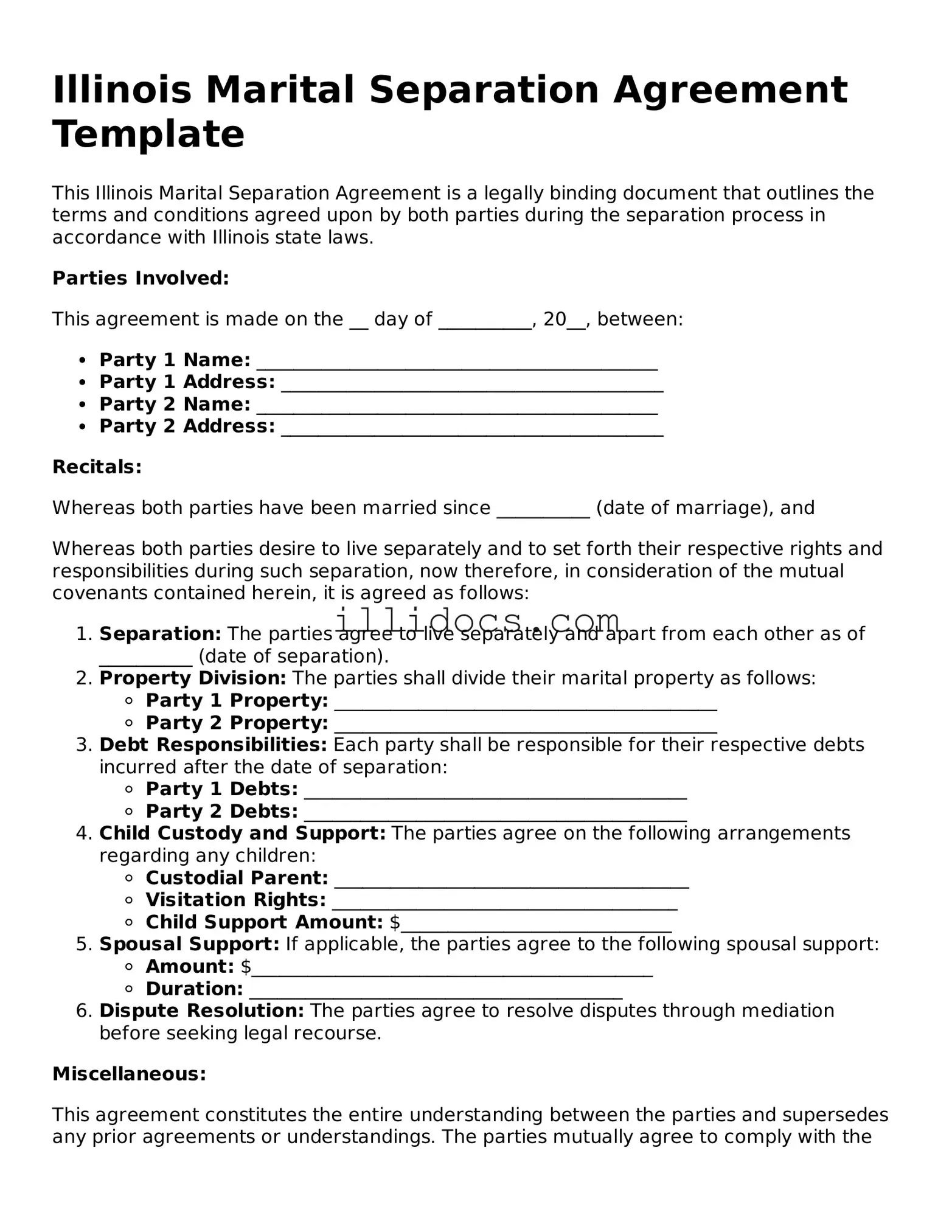What is a Marital Separation Agreement in Illinois?
A Marital Separation Agreement is a legal document that outlines the terms of separation between spouses. It addresses various issues such as property division, child custody, and support obligations. This agreement helps both parties understand their rights and responsibilities while they live separately, and it can serve as a foundation for future divorce proceedings if desired.
Who should consider using a Marital Separation Agreement?
Couples who are contemplating separation may find a Marital Separation Agreement beneficial. It is particularly useful for those who wish to clarify their financial and parental responsibilities without immediately proceeding to divorce. This agreement can provide a sense of stability during a tumultuous time, especially when children are involved.
What should be included in a Marital Separation Agreement?
Essential elements of a Marital Separation Agreement typically include the division of marital property, arrangements for child custody and visitation, child support amounts, and spousal support if applicable. It may also cover debt responsibilities and any other relevant issues that the couple wishes to address. Each agreement should be tailored to the specific circumstances of the couple.
Is a Marital Separation Agreement legally binding?
Yes, a Marital Separation Agreement is legally binding once both parties have signed it. However, it is important for both spouses to fully understand the terms before signing. If either party fails to adhere to the agreement, the other can seek enforcement through the court. It is advisable to consult with a legal professional to ensure that the agreement is fair and enforceable.
Can a Marital Separation Agreement be modified?
Yes, a Marital Separation Agreement can be modified if both parties agree to the changes. Life circumstances can change, and what was once a suitable arrangement may need to be adjusted. It is essential to document any modifications in writing and have both parties sign the revised agreement to ensure its validity.
Do I need a lawyer to create a Marital Separation Agreement?
While it is not legally required to have a lawyer draft a Marital Separation Agreement, it is highly recommended. A lawyer can provide valuable guidance, ensuring that the agreement complies with Illinois law and adequately protects your interests. They can also help clarify complex issues that may arise during the separation process.
How does a Marital Separation Agreement affect divorce proceedings?
A Marital Separation Agreement can simplify the divorce process by addressing many issues upfront. If the couple decides to proceed with divorce, the terms outlined in the separation agreement can often be incorporated into the final divorce decree. This can save time and reduce conflict during divorce negotiations.
What happens if one party violates the Marital Separation Agreement?
If one party does not adhere to the terms of the Marital Separation Agreement, the other party has the right to seek enforcement through the court. The court can order compliance or address any violations as necessary. It is important to document any breaches and seek legal advice to understand the best course of action.
How do I file a Marital Separation Agreement in Illinois?
To file a Marital Separation Agreement in Illinois, you typically do not need to file it with the court unless you are also initiating divorce proceedings. However, it is wise to keep a copy of the signed agreement for your records. If you decide to file for divorce later, the agreement can be presented to the court as part of your case.
